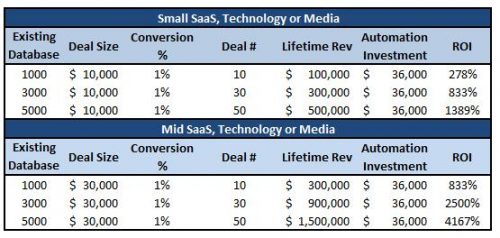 In Part 1 and Part 2 of this series, we discussed how buyers have changed the way they buy and why your approach to sales and marketing needs to change if you want more deals, to grow revenue, and to increase profit. We also discussed why your strategy needs to align sales and marketing around a pure focus on the customer “buying” cycle.
In Part 1 and Part 2 of this series, we discussed how buyers have changed the way they buy and why your approach to sales and marketing needs to change if you want more deals, to grow revenue, and to increase profit. We also discussed why your strategy needs to align sales and marketing around a pure focus on the customer “buying” cycle.
We pointed to the fact that companies who:
- Are ready for a longer sales cycle
- Educate their buyers first
- Create a shared scorecard to align sales and marketing
- Embrace emerging sales and marketing technologies
- And budget appropriately
We have grown revenue 157% over the past 2 years while also reducing the total cost of sales.
In Part 3 of this series, we will discuss the core competencies and disciplines you’ll need to support to make this type of growth a reality.
What is B2B Lead Generation vs. B2B Demand Generation?
Before we get started it’s helpful to understand what we mean by b2b lead generation vs. b2b demand generation.
B2B Lead Generation – For Gabriel Sales, lead generation is about putting targets into your sales funnel at the very front end of the pipe. Adding a lead is simply finding a qualified person from a particular company that is interested in learning more about your product or service.
B2B Demand Generation – Is the process of moving that lead through a sales and marketing process to educate the buyer, bolster interest, and prepare them for speaking with the sales team.
Once you have a team in place that’s able to get the “B2B Demand Generation” process right, lead generation will become much easier.
1) Content Strategy: First, you’ll want to talk to your best sales reps to understand who your ideal targets are by decision maker type. Next you want to clone the sales process of these top sales reps to figure out what is the best thing to say to early-stage targets, what are the best early-stage offers, and what are the most frequent objections or questions in the early-stage sales cycle. You then need a content mapping tool and calendar to prioritize educational content based on the needs of your buyer and your sales team. We have developed a simple tool using Excel that is then shared in the cloud so it’s a live, agile marketing document. Someone will need to manage this document. It’s important that your content ultimately supports the sales script so the two work together to move deals into the pipe in tandem always focused on moving the buyer to the next step.
2) Content Production: It’s cliché but content is king. It drives traffic, provides value and converts visitors to subscribers and customers. Producing quality content is essential. Creating content is not the place to cut corners or try to shave costs. If done well and consistently, you’ll become recognized as a thought leader in your industry. This is a fantastic opportunity for you to differentiate yourself from your competition, because most companies don’t commit the time and resources to actually produce regular, quality content. Content then becomes quite literally an asset.
You’ll also want to leverage each piece of major content at least 3 times. So for example (and why we love webcasting) – if you commit to 1 to 2 webcasts per quarter you can typically turn that webcast into a white paper, create 3-5 shorter 1 to 2 minute video clips, and generate 7 to 8 blogs all from that initial piece of thought leadership. Take the content that you already know is engaging and working for your sales reps and product specialists in a live context and convert it into alternative, digitized pieces of content to distribute and share with your larger, not-yet engaged audience of early-stage buyers.
3) Content Management: Selecting a quality Content Management System (CMS) like WordPress is the first step in the content management process. You’ll also need to staff a resource to maintain your content schedule, add and edit content, and publish it into the right channels. Ideally, this same someone would also know how to contextually repurpose and publish your content. You also need to have the capability and capacity to create landing pages at will for specific verticals and decision makers to aggregate and focus your content for specific markets and buyer types. Gabriel Sales Digital Sales Base Camp™ was created to make this part of your content management seamless and efficient.
4) Email Management: Learning the rules, regulations and best practices of email marketing and management is not a core competency of many companies. A ‘Ready Fire Aim’ approach that doesn’t work when doing email marketing. Proper messaging, design (e.g. smart-phone compatibility), list segmentation, privacy/spam rules, auto-responder optimization, and more are all major factors in doing email marketing correctly. Many companies just blast their entire list and hope for the best, time and time again. Many others simply don’t do email marketing at all! The discipline is still required as a B2B lead generation tactic.
5) CRM Integration and List Acquisition: Making sure that all of your communication and analytic tools are synchronized with your CRM is an under-utilized practice, but one that can be the defining difference between converting a hot lead and losing a deal. Without conversions, b2b lead generation efforts mean nothing. You also need to make sure you are not spending money acquiring lists that don’t make sense or are redundant.
6) Landing Page Optimization: Use landing pages to deliver your critical content in an organized way that also promotes a compelling, ‘easy to take’, and singular call to action. This is an essential but usually undeveloped practice in many businesses’ web marketing/lead generation efforts.
7) Analytics and Database Management: The tools and methods of data discovery go into greater depths than ever before, but solid logic for how business decisions are made against all of this data are still lacking for many organizations. Companies spend incredible amounts of money for the tools but lose out on much of the ROI by not investing in the staff and education to actually use them to demonstrate meaningful insights. See Analytics Expert, Avinash Kaushik’s often-cited blog article on the 90/10 rule of web analytics success.
8) Graphic Design and Video Production: Having quality graphic design at the right times can set you apart from many competitors. Having the ability to take your existing presentations, customers and thought leaders and allowing them to get their best material circulating digitally will save your team 100s of hours annually educating customers.
9) Social Media and Reputation Management: Creating active engagement with your potential customer base in the major social media channels (Facebook, Twitter, LinkedIn and Google+) is an ideal to which your business should strive. Getting these profiles going is a step that many businesses have been reluctant to take and is necessary for mature b2b lead generation. Further, setting up tools to manage your company’s on-line reputation (e.g. creating alerts anytime your product, brand, management team is mentioned online) is becoming increasingly important to properly leverage positive feedback from brand champions and limit the influence of detractors out to destroy your business’ reputation.
10) Marketing Automation: This is the wave of the future for marketers and sales people, alike. Aside from investing in one of the top marketing automation tools (such as Pardot or Marketo), making an equal or greater investment in human resources to optimize your marketing automation is the next logical step. The added intelligence gained (e.g. lead scoring, real-time visitor analysis) and the powerful tools available (e.g. automated rules, logic-based drip campaigns, page actions) will transform your lead generation and sales prospect prioritization beyond anything you’ve done before. If you are unfamiliar with marketing automation, now is the time to educate and get on board. GS is an authorized Pardot Agency Partner (among several other technologies) so we have a bias for Pardot and we can offer unparalleled ability in implementing and optimizing these tools to quickly accelerate marketing results for any business. If you have never checked out a marketing automation demo don’t hesitate and take the time for a 5 Minute Overview of Marketing Automation right now!
11) Phone Resources: Effective lead generation and lead nurturing still requires people to pick up the phone. You need to strongly consider attaching reps to your marketing team and not your sales team. In terms of demand generation there is a difference between ‘educating’ buyers vs. ‘selling’ buyers. Getting this part wrong can destroy your entire investment up to this point. Getting this part right will give you a huge leg up on your competition because:
- 70% of leads are passed to Sales Reps before they are ready to engage (Marketing Sherpa -2012)
- 80% of mishandled leads will buy from a competitor (Forrester -2011)
And if you have the other pieces we’ve described above in place, like quality content production, marketing automation and social media management, your phone reps will have an easier time with b2b lead generation and creating engaged, meaningful discussion with prospects and the end results will be far more beneficial to your conversion goals.
Summary
The seismic shift we are seeing right now essentially means that marketing now needs to own the prospect much earlier in buying process and take them much deeper. The goal is to connect the buyer with the sales rep when the buyer is ready to buy. This approach leads to faster transactions and maximizes the sales reps time. The line between sales and marketing as it applies to demand generation is getting blurred and this trend is not going to abate any time soon. You need to softly press for next steps with both your reps and your content. This is why its key to pull in a marketing automation platform will accelerate your ability to pull it all together to score a prioritize leads. In Part 4, we’ll discuss in more detail how marketing automation can help your sales and demand generation process.
The job and landscape is getting more complex. So who is going to actually do all this work? How do you find marketers that understand sales and sales staff that understand marketing? This is where considering to outsource to a b2b lead generation company with expertise in outsourced sales and marketing may be able to help. So feel free to request a free consultation if you are curious how we can help.
 Photo of green plant between male hands on a black background[/caption]B2B marketers today face a complex landscape.
Photo of green plant between male hands on a black background[/caption]B2B marketers today face a complex landscape.
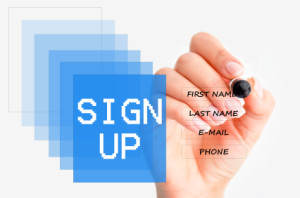 Many B2B companies try so hard to generate more leads that they do not come up with a clear strategy for how to do so most efficiently and effectively. What these companies do not understand is that a successful campaign requires clearly defined goals and a well-articulated strategy.
Many B2B companies try so hard to generate more leads that they do not come up with a clear strategy for how to do so most efficiently and effectively. What these companies do not understand is that a successful campaign requires clearly defined goals and a well-articulated strategy. In Part 1 and Part 2 of this series, we discussed how
In Part 1 and Part 2 of this series, we discussed how 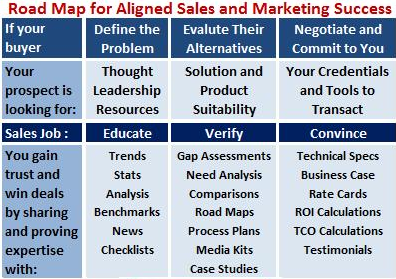
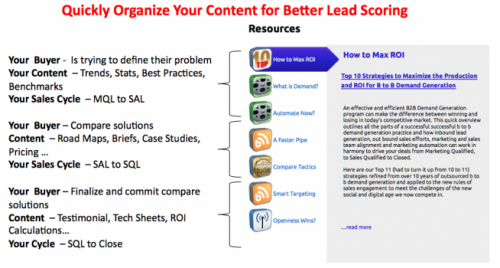 Organize your Content Ahead of Time
Organize your Content Ahead of Time  B2B sales companies have come up with a variety of ways to generate more leads, and building a successful campaign requires that companies carefully and strategically choose a method that addresses their specific goals. As an outsourced sales, outsourced lead generation company and outsourced marketing firm this is part of our series to educate customers not experienced in sales and marketing with some of the B2B Lead Generation Fundamentals to help them make an informed decision about lead generation outsourcing. This blog discusses the differences between hard and soft lead generation methods, as well as when each is appropriate for use.
B2B sales companies have come up with a variety of ways to generate more leads, and building a successful campaign requires that companies carefully and strategically choose a method that addresses their specific goals. As an outsourced sales, outsourced lead generation company and outsourced marketing firm this is part of our series to educate customers not experienced in sales and marketing with some of the B2B Lead Generation Fundamentals to help them make an informed decision about lead generation outsourcing. This blog discusses the differences between hard and soft lead generation methods, as well as when each is appropriate for use. We are calling this a Top 10 demand generation strategies list, but as we went through the strategies, we felt the need to give your b to b demand gen amplifier one more notch and took it to 11. This blog post is a quick reference for your company to build a successful b to b demand generation practice focused on improving your ROI statement.
We are calling this a Top 10 demand generation strategies list, but as we went through the strategies, we felt the need to give your b to b demand gen amplifier one more notch and took it to 11. This blog post is a quick reference for your company to build a successful b to b demand generation practice focused on improving your ROI statement.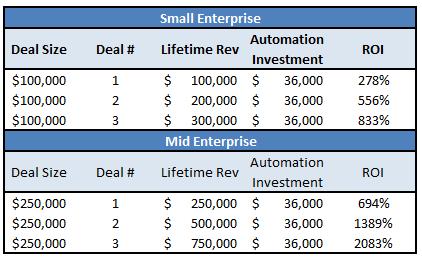 8. Know your the inflection point for your ROI statement when implementing a Marketing Automation Platform and Nurturing program. A platform (as an outsourced sales company we recommend Pardot) cost $16K. A 3 series webinar will cost you roughly $6K-$10K in house or external. Basic blog content creation will cost about $12K. And planning, database integration and implementation can range from$12K to $24K. So all in you are looking at $72K if you are starting from scratch. If you are following the best practices laid out above or you have implemented a sales outsourcing solution, or b to b demand generation solution with Gabriel Sales, you will already have a great deal of the content planning you need so an implementation is roughly $24K-$36K. You can do the math from there (we have a back of the envelope chart below to help). If your average deal size is $100K + the ability to track digital content and the time savings alone for the senior rep makes it an easy decision to pull the trigger. For smaller and shorter sales cycles it really comes down to how many leads you have in your database because countless studies have shown that if your product has legs you can expect to convert at least 1% to 3% of the leads that were initially just curious.
8. Know your the inflection point for your ROI statement when implementing a Marketing Automation Platform and Nurturing program. A platform (as an outsourced sales company we recommend Pardot) cost $16K. A 3 series webinar will cost you roughly $6K-$10K in house or external. Basic blog content creation will cost about $12K. And planning, database integration and implementation can range from$12K to $24K. So all in you are looking at $72K if you are starting from scratch. If you are following the best practices laid out above or you have implemented a sales outsourcing solution, or b to b demand generation solution with Gabriel Sales, you will already have a great deal of the content planning you need so an implementation is roughly $24K-$36K. You can do the math from there (we have a back of the envelope chart below to help). If your average deal size is $100K + the ability to track digital content and the time savings alone for the senior rep makes it an easy decision to pull the trigger. For smaller and shorter sales cycles it really comes down to how many leads you have in your database because countless studies have shown that if your product has legs you can expect to convert at least 1% to 3% of the leads that were initially just curious. 